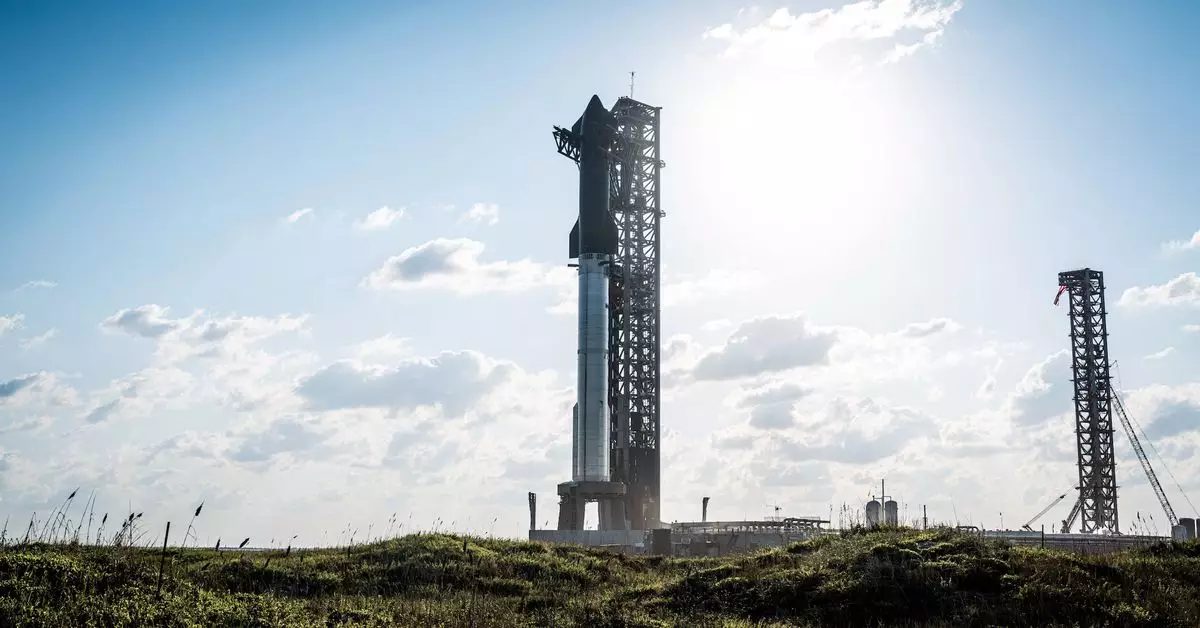As the aerospace community eagerly anticipates the launch of SpaceX’s Starship on October 13th, the stakes are undeniably high. Slated to occur within a 30-minute window starting at 8 AM ET, this represents the fifth attempt at propelling Starship into the cosmos. The significance of this launch goes beyond mere excitement; it showcases SpaceX’s relentless endeavor toward innovating space travel. The Federal Aviation Administration (FAA) has recently given its approval, confirming that SpaceX has satisfied all requisite safety and environmental standards for this suborbital test flight.
Gaining FAA approval is not merely a bureaucratic necessity but rather a critical milestone for SpaceX. This certification affirms that the company has adhered to stringent guidelines and addressed any potential stakeholder concerns related to safety and environmental impact. The FAA’s stamp of approval translates to a vote of confidence, bolstering SpaceX’s reputation as a serious player in the aerospace sector. As this launch approaches, understanding the process of these approvals reminds us that even a company as pioneering as SpaceX must navigate complex regulatory landscapes to achieve its ambitious goals.
For enthusiasts and casual observers alike, SpaceX plans to livestream the imminent launch, providing a front-row seat to what may be another historic event. Scheduled to begin approximately 35 minutes before liftoff, the livestream can be accessed via SpaceX’s official website, its X account, and through the X TV app. This accessibility speaks volumes about the company’s commitment to transparency and audience engagement. By inviting the public into their world of innovation, SpaceX not only cultivates excitement but also fosters broader public interest in space exploration.
This particular flight has its own unique set of objectives. SpaceX aims to successfully return the Super Heavy booster to its launch site—a feat that has not been accomplished in previous launches. Furthermore, the company is targeting another successful splashdown of Starship in the Indian Ocean, an achievement they celebrated during their fourth flight test back in June. Such goals reflect the broader ambition of dramatically reducing the cost and risk associated with space travel, an endeavor that could ultimately make space more accessible.
As we stand on the precipice of what could be a transformative moment in space exploration, the implications of this launch extend far beyond the realm of technological achievement. With the FAA’s endorsement and a global audience awaiting the live stream, SpaceX is not only pushing the boundaries of aerospace engineering but also inviting the world to dream bigger about the future of space travel. The success of this launch could lay the groundwork for a new era of interplanetary exploration and commercial spaceflight, harnessing both innovation and international interest for future missions. The road ahead is paved with challenges, yet each launch brings us one step closer to making the stars more reachable than ever.

